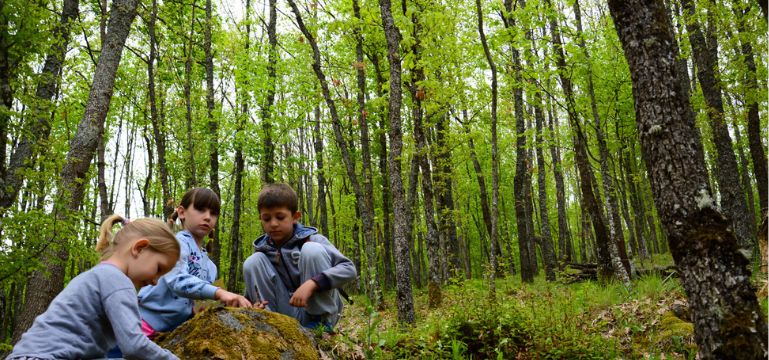The use of the outdoor learning environment to support pupils learning and well-being

Quick links:
Information about the school
Rhayader Church in Wales Primary School is an dual stream primary school in Rhayader, Powys, located on the edge of the Elan Valley. The school serves an area which is neither disadvantaged nor advantaged. The school has grown significantly in pupil numbers in the last five years. The school is set in extensive grounds with green spaces and woodland.
Context and background to the effective or innovative practice
Staff aim to ensure that provision meets the needs of all their pupils to enable them to achieve success and improved well-being. The school is an inclusive school catering for a wide range of additional learning needs. Five years ago, the school was concerned about pupil engagement and attendance and became involved in a Creative Arts project to investigate if a pupil led curriculum could improve learner outcomes. The school is set in extensive grounds that due to health and safety constraints were not being fully utilised. Through the work with the Arts Council for Wales creative practitioner, the staff asked pupils to identify how they preferred to learn. This resulted in a pupil led curriculum and the full use of the outdoor areas. A study of the use of the outdoor environment formed part of the project and staff planned and created spaces for teaching and learning.
Description of nature of strategy or activity
The school has established dedicated forest school areas and outdoor class areas. There was a whole school focus on training staff to plan and deliver outdoor learning in almost all lessons. This has been embedded through the whole school and every class has regular forest school sessions. The use of the outdoors is an integral part of the school day and in all weathers. These outdoor activities encourage the pupils to regularly use tools, light fires, climb trees and build shelters, as well as using the outdoors for more curriculum-based numeracy and literacy sessions. The areas are also used for well-being focus times for pupils to have calm time and grounding techniques are used for any pupils who need them.
What impact has this work had on provision and learners’ standards?
The activities planned allow the pupils to take risks, build reliance and has a positive impact on their well-being following the COVID-19 pandemic. Through using the outdoors daily in regular lessons, the pupils become more confident and self-aware. Being in nature has shown that it helps to regulate emotions and co-operate with others more effectively. The unstructured outdoor environment promotes adaptability within children and boosts their motivation to succeed. Pre the COVID pandemic, the use of the outdoors had a positive impact on school attendance. Teachers find that concentration and focus in classroom are better following outdoor learning sessions.
How have you shared your good practice?
The school promotes the use of the outdoors with the pre-school settings on the school site. Working with local organisations, such as Cambium Sustainable, has extended the use of forest school in other local schools. Pre COVID-19, the school shared best practice and training with other cluster schools and held an outdoor learning day for the community and invited diocese schools. The diocese education officer has created an outdoor learning showcase video to share with other diocese schools.